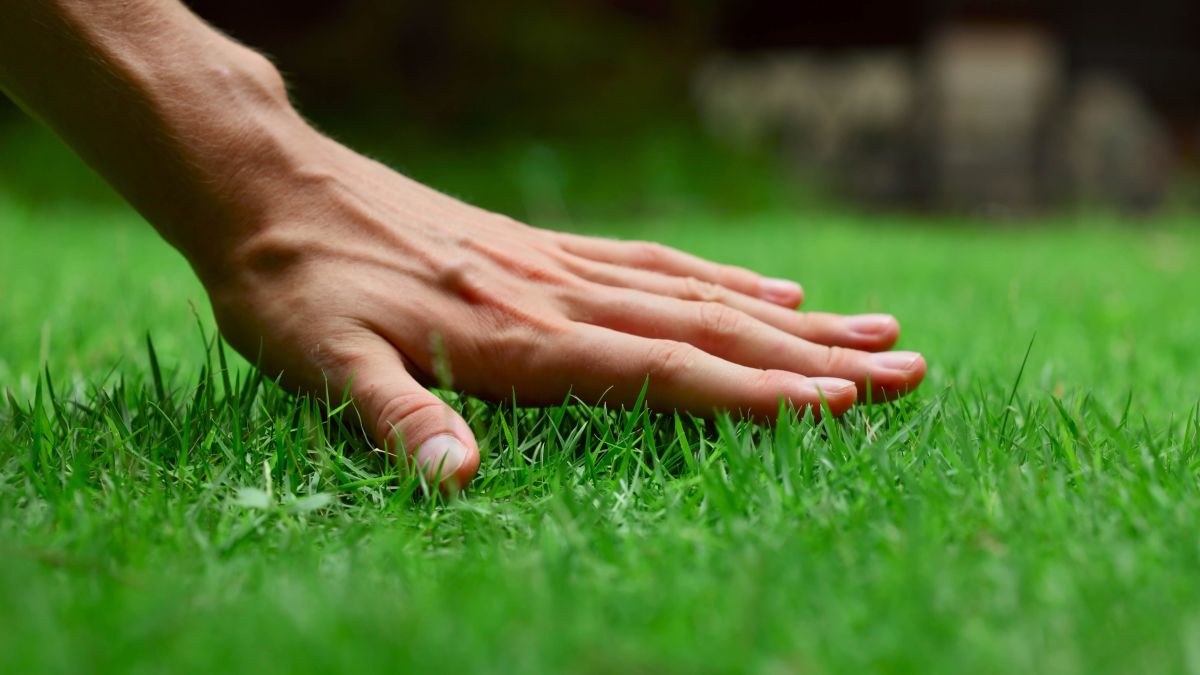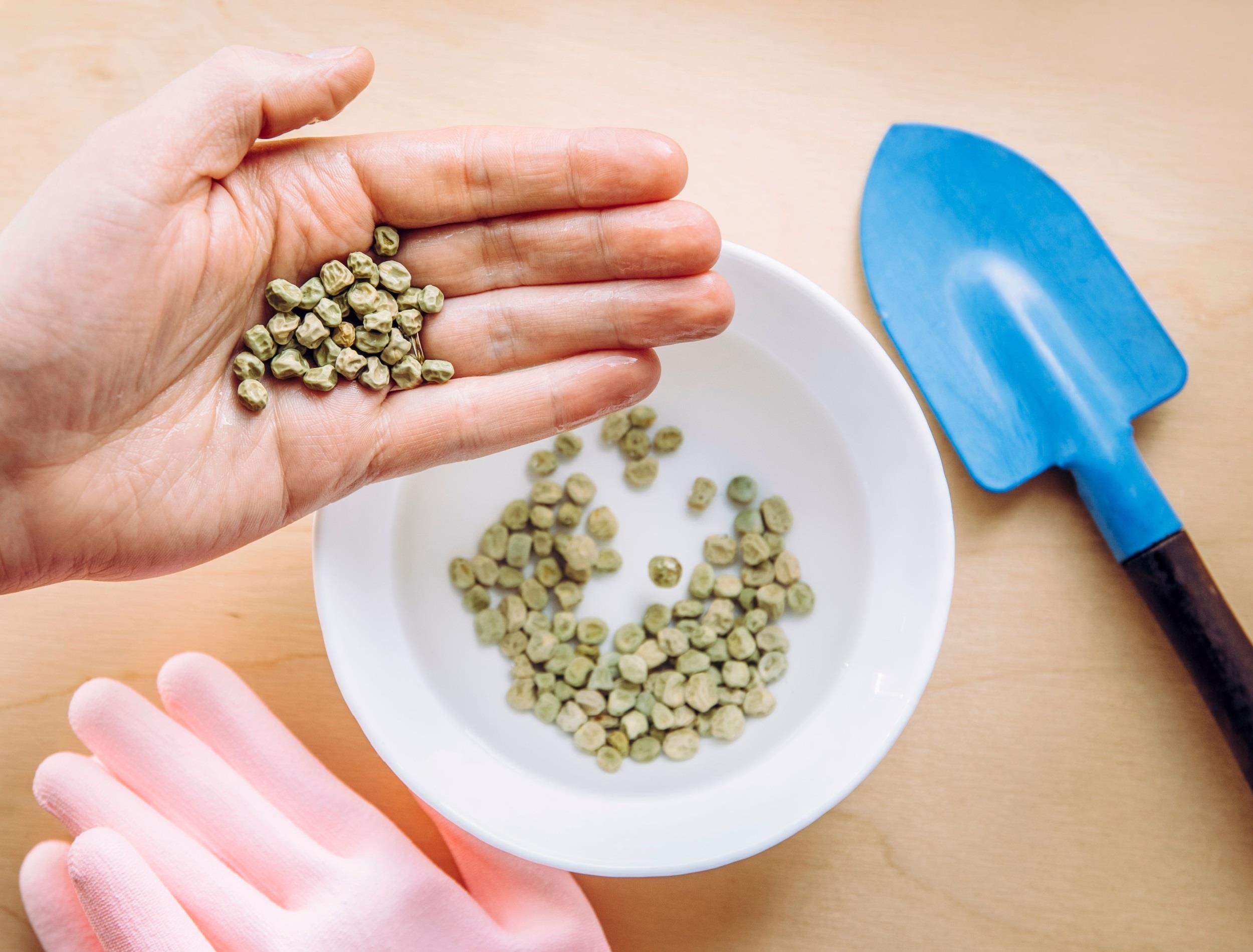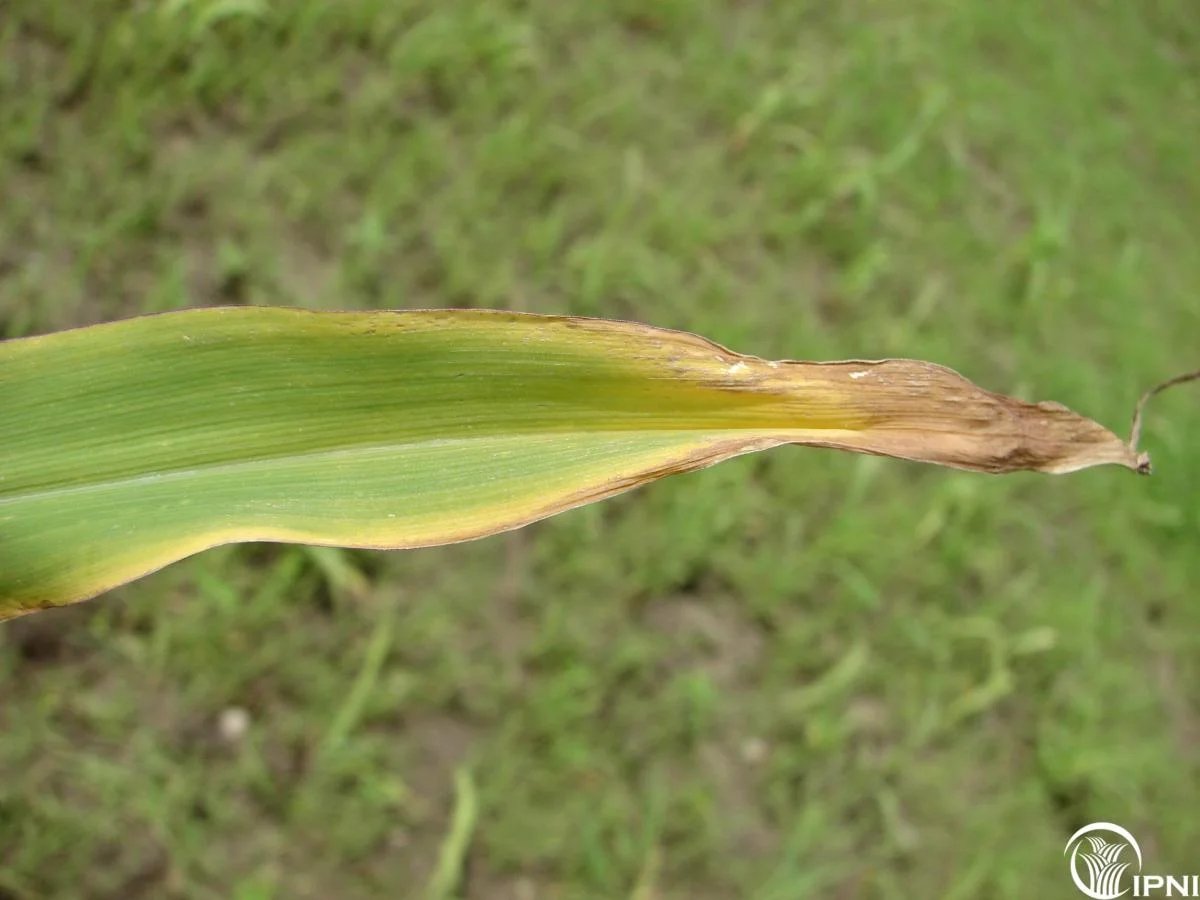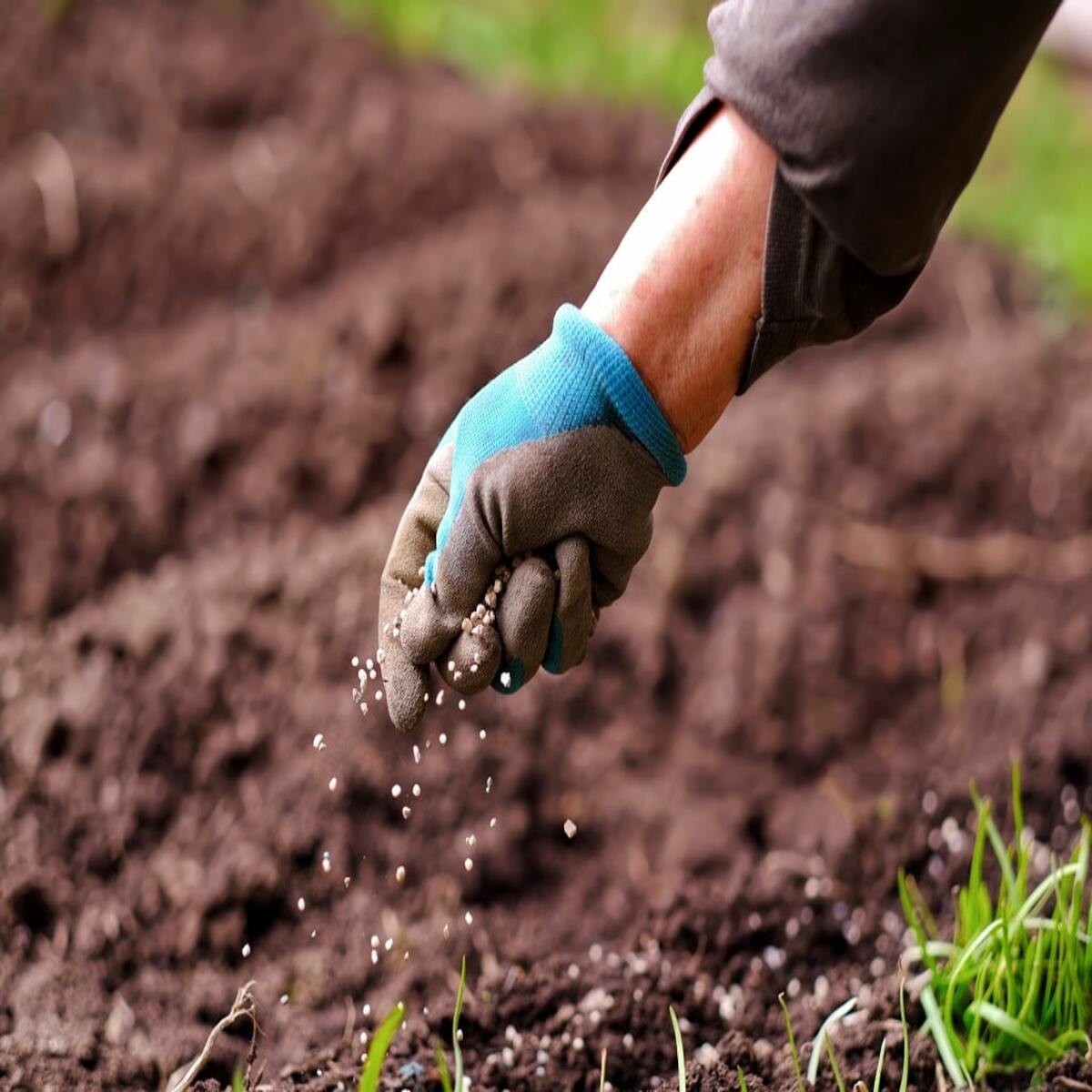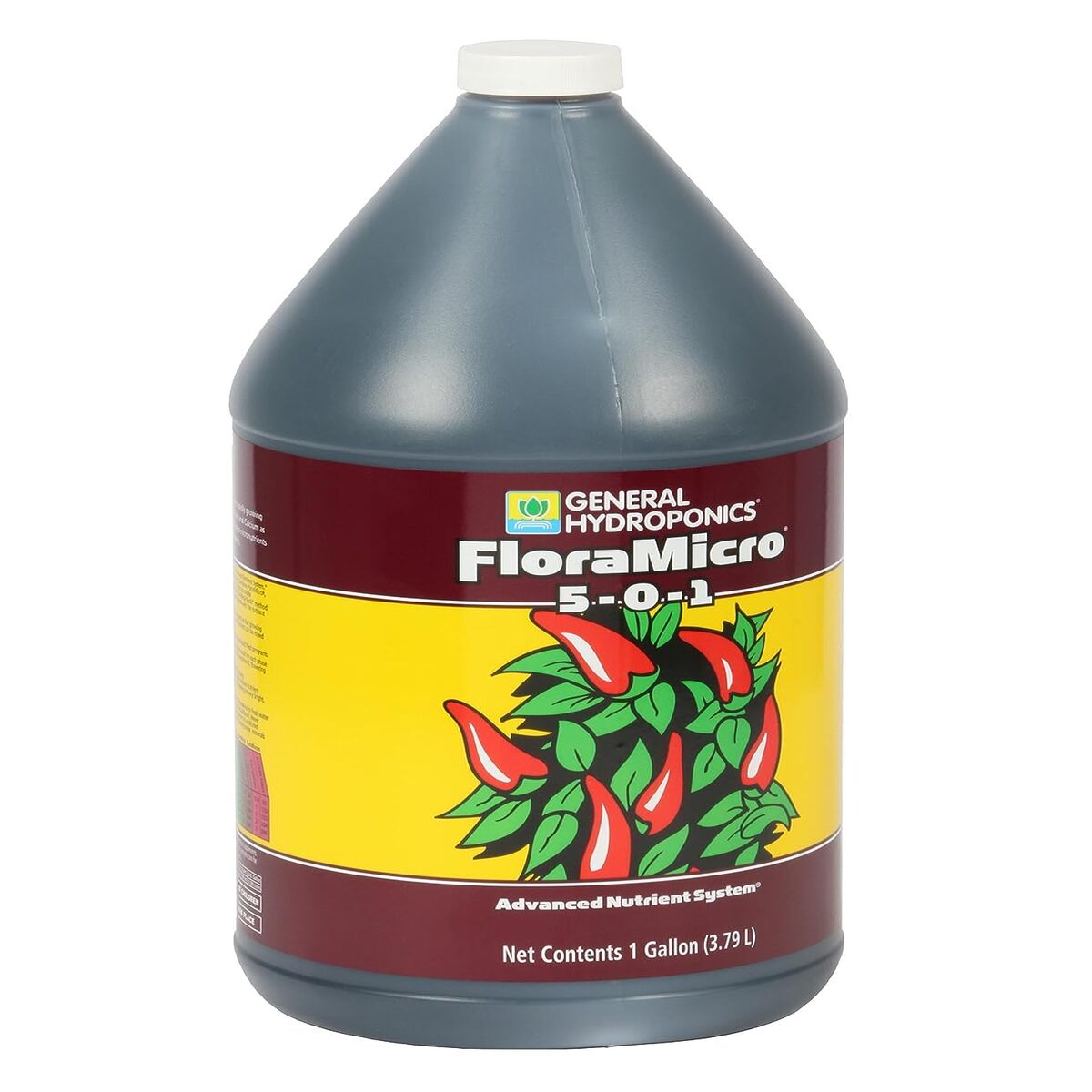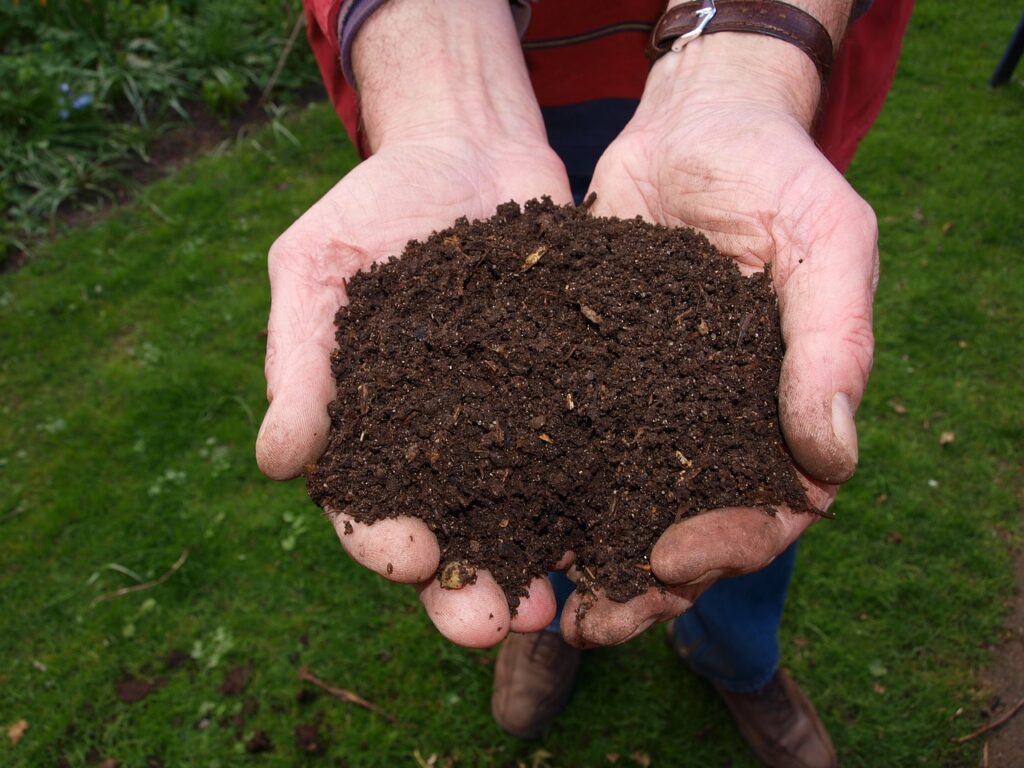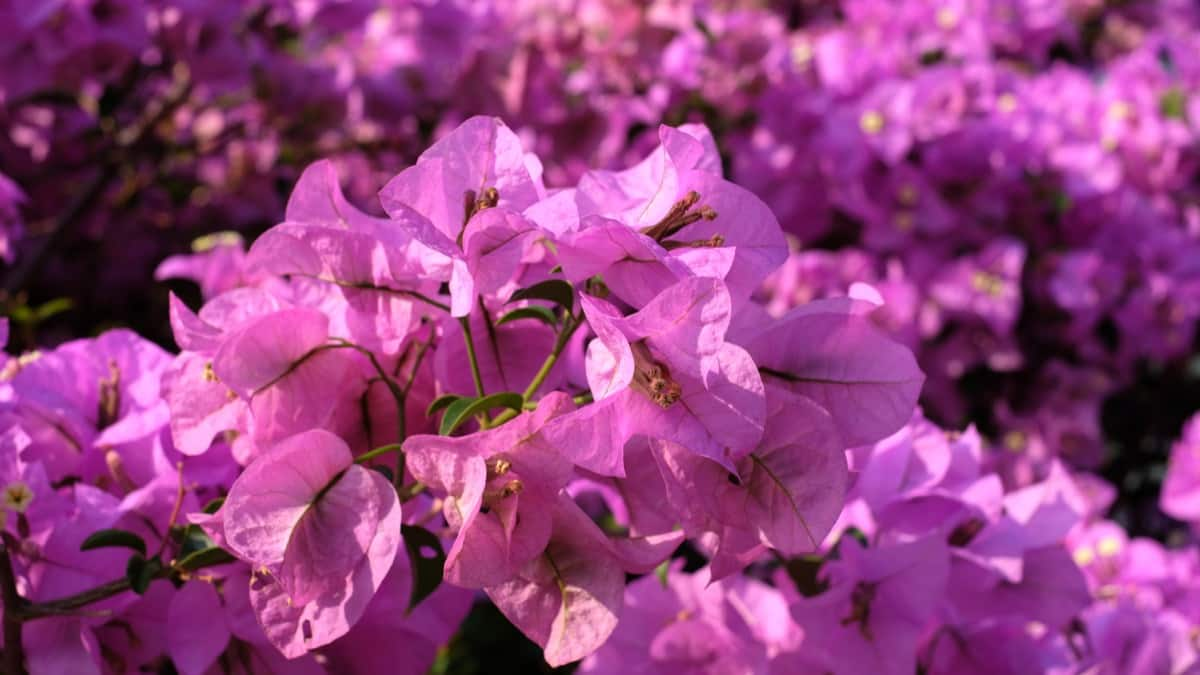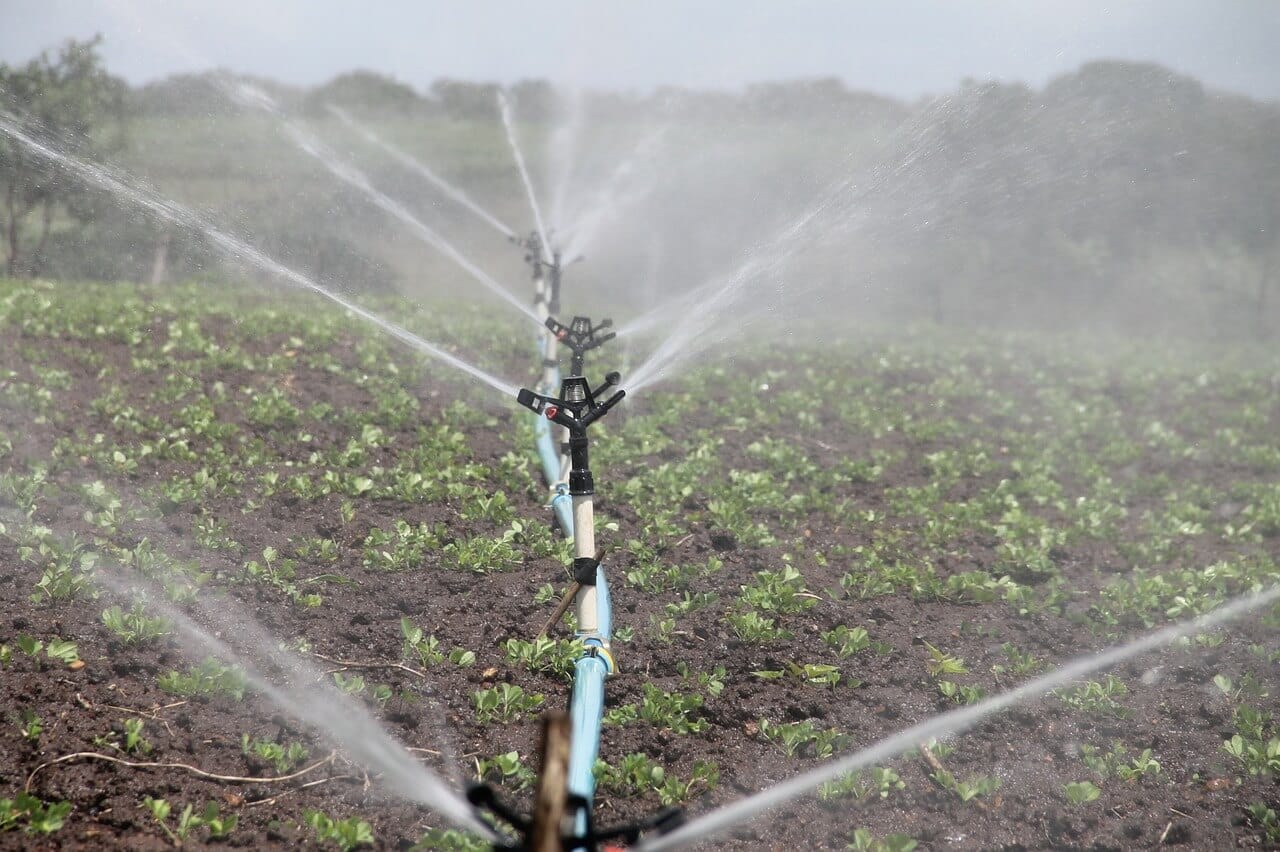Home>Types of Gardening>Edible Gardening>What Type Of Fertilizer To Use On Green Beans
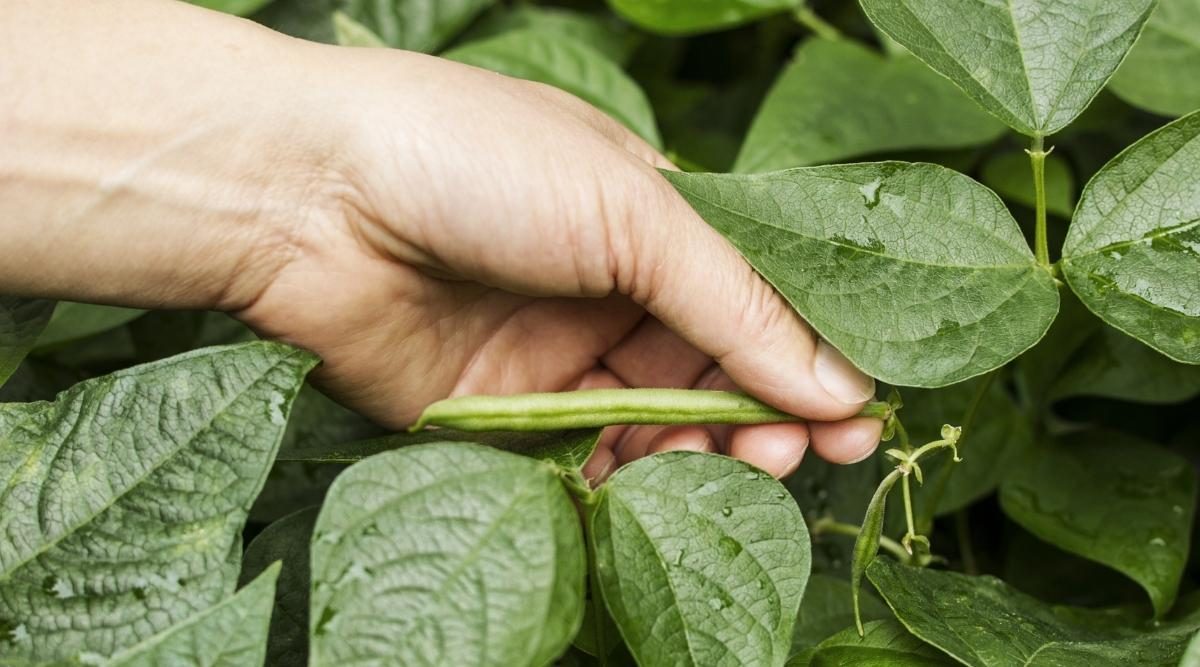

Edible Gardening
What Type Of Fertilizer To Use On Green Beans
Modified: January 22, 2024
Discover the best fertilizer for green beans and optimize your edible gardening. Learn which nutrients are essential for healthy green bean plants and abundant harvests.
(Many of the links in this article redirect to a specific reviewed product. Your purchase of these products through affiliate links helps to generate commission for Chicagolandgardening.com, at no extra cost. Learn more)
Table of Contents
Introduction
Welcome to the world of edible gardening, where you can cultivate your own fresh and nutritious vegetables. If you’re a beginner or a seasoned gardener looking to expand your gardening repertoire, green beans are an excellent choice. With their vibrant green color, crisp texture, and satisfying taste, green beans are a versatile and rewarding addition to any garden.
Before you start planting and growing green beans, it’s important to understand their nutritional needs. Like any plant, green beans require certain essential nutrients to thrive and produce a bountiful harvest. While the soil in your garden may provide some nutrients, it’s often necessary to supplement with fertilizers to ensure that your green beans receive an optimal balance of nutrients.
In this article, we will explore the different types of fertilizers that are suitable for green beans, both organic and synthetic. We will also discuss the benefits of slow-release and liquid fertilizers specifically formulated for green beans. By the end of this article, you will have a clear understanding of the various fertilizers available and how to apply them effectively to maximize the growth and yield of your green beans.
Whether you have a small backyard garden, a raised bed, or even a container garden, understanding the right type of fertilizer for green beans is crucial. It’s not just about providing the necessary nutrients, but also about doing it in a way that is sustainable and safe for both your plants and the environment.
So, let’s dive into the fascinating world of fertilizers and discover the best options for nourishing your green beans!
Understanding the Nutritional Needs of Green Beans
In order to grow healthy and productive green beans, it’s essential to understand their nutritional requirements. By providing the right balance of nutrients, you can ensure that your plants receive the nourishment they need to thrive and produce a abundant harvest.
Green beans are heavy feeders, meaning they require a steady supply of key nutrients throughout their growth cycle. The three main macronutrients that green beans need are nitrogen (N), phosphorus (P), and potassium (K). Nitrogen is crucial for leafy growth, phosphorus promotes root development and flower formation, while potassium enhances overall plant health and disease resistance.
In addition to these macronutrients, green beans also require micronutrients such as calcium, magnesium, and iron in smaller quantities. These micronutrients play crucial roles in various plant processes, including enzyme activation, photosynthesis, and nutrient uptake.
The nutritional requirements of green beans can be met through the use of fertilizers. When selecting a fertilizer for your green beans, it’s important to consider the nutrient ratios provided on the packaging. Look for a fertilizer with a balanced NPK ratio, such as 10-10-10 or 14-14-14, which indicates equal proportions of nitrogen, phosphorus, and potassium.
It’s also worth noting that the soil pH level can affect the availability of nutrients to green beans. Green beans prefer slightly acidic soil with a pH range of 6.0 to 6.8. If your soil is too acidic or alkaline, the plants may struggle to absorb certain nutrients, leading to nutrient deficiencies and stunted growth.
Regular soil testing can provide valuable insights into the pH level and nutrient content of your soil. Based on the results, you can make informed decisions about the type and quantity of fertilizer needed to meet the specific needs of your green beans.
Understanding the nutritional needs of green beans is crucial for their growth and productivity. By providing the right balance of macronutrients and micronutrients, along with maintaining the appropriate soil pH level, you can ensure that your green beans thrive and produce an abundant harvest.
Organic Fertilizers Suitable for Green Beans
For those who prefer to garden using organic methods, there are a variety of organic fertilizers available that are suitable for green beans. These fertilizers are derived from natural sources and provide a slow and steady release of nutrients to the plants, promoting healthy growth and abundant yields.
One popular organic fertilizer option for green beans is compost. Compost is created through the decomposition of organic materials, such as kitchen scraps, yard waste, and livestock manure. It is rich in organic matter and nutrients, making it an excellent choice for enriching the soil and providing a balanced nutrient profile for green beans.
In addition to compost, other organic fertilizers such as bone meal, fish emulsion, and blood meal can be used to nourish green beans. Bone meal is high in phosphorus, which promotes strong root development and flowering. Fish emulsion is a liquid fertilizer made from fish byproducts and provides a quick source of nutrients to green beans. Blood meal is rich in nitrogen and helps stimulate lush vegetative growth.
Another organic fertilizer option specifically formulated for green beans is soybean meal. It is derived from soybeans and is a good source of nitrogen, phosphorus, and potassium. It breaks down slowly over time, providing a consistent supply of nutrients to the plants.
When applying organic fertilizers, it’s important to follow the instructions on the packaging and avoid overfertilizing, as this can lead to nutrient buildup and potential damage to the plants. Organic fertilizers work best when applied before planting or incorporated into the soil, allowing the nutrients to become available to the roots as the plants grow.
One of the advantages of using organic fertilizers is that they improve soil health and fertility over time. They increase the soil’s ability to retain moisture, improve drainage, and promote beneficial microbial activity. This, in turn, enhances the overall health of the green beans and helps them withstand common pests and diseases.
By choosing organic fertilizers for your green beans, you not only ensure the health and productivity of your plants but also contribute to a more sustainable and environmentally friendly gardening practice. Organic fertilizers provide a natural and effective way to nourish your green beans without the use of synthetic chemicals.
Synthetic Fertilizers Suitable for Green Beans
Synthetic fertilizers are a popular choice among many gardeners due to their convenience and ability to provide precise nutrient ratios. These fertilizers are manufactured using synthetic compounds and offer a quick release of nutrients to promote rapid plant growth and development.
One commonly used synthetic fertilizer for green beans is a balanced 10-10-10 or 14-14-14 fertilizer. This type of fertilizer provides equal proportions of nitrogen, phosphorus, and potassium, which are essential for the overall health and productivity of green beans.
Synthetic fertilizers are available in different formulations, such as granular, liquid, or water-soluble. Granular fertilizers are often applied before planting or worked into the soil during preparation. They release nutrients slowly over time, providing a steady supply to the plants.
Liquid fertilizers, on the other hand, are applied directly to the plants through foliar feeding or watering. They are quickly absorbed by the leaves or roots, allowing for immediate nutrient uptake. Liquid fertilizers are particularly useful for providing an extra boost of nutrients during the growing season.
Water-soluble fertilizers are another synthetic option that can be dissolved in water and applied through irrigation systems. They are convenient to use and ensure accurate nutrient delivery to the plants.
When using synthetic fertilizers, it’s important to follow the recommended application rates provided on the packaging. Overfertilizing with synthetic fertilizers can lead to nutrient imbalances, nutrient leaching, and environmental pollution. It’s also crucial to water the plants properly after applying synthetic fertilizers to prevent root burn.
While synthetic fertilizers can provide quick and targeted nutrition to green beans, they do have some drawbacks. Unlike organic fertilizers, synthetic fertilizers do not improve soil structure or microbiological activity. They also have the potential to harm beneficial soil organisms and contribute to nutrient runoff in water bodies.
It’s important to strike a balance between using synthetic fertilizers for convenience and maximizing the benefits of organic matter and natural soil amendments. By combining synthetic fertilizers with organic practices, such as using compost or cover crops, you can strike a balance between convenience and sustainable gardening.
It’s worth noting that for those who prefer organic gardening methods or have concerns about the environmental impact of synthetic fertilizers, organic fertilizers are a suitable alternative to nourish green beans.
Slow-Release Fertilizers for Green Beans
Slow-release fertilizers are a convenient option for providing a steady and gradual supply of nutrients to green beans over an extended period of time. These fertilizers are formulated with encapsulated nutrients that slowly break down in response to temperature, moisture, and microbial activity in the soil.
One of the main benefits of using slow-release fertilizers is that they reduce the risk of overfertilizing and burning the plants. The nutrients are released slowly, allowing the plants to take up the nutrients as needed, minimizing the chances of nutrient leaching and loss.
Common slow-release fertilizers for green beans include coated granules or pellets, which contain a blend of essential nutrients. These granules are typically spread around the base of the plants or incorporated into the soil during planting.
Osmocote and Nutricote are popular slow-release fertilizer brands that provide a balanced nutrient profile for green beans. These fertilizers release nutrients over a period of 3 to 4 months, ensuring a constant supply of essential elements for the plants’ growth and development.
Slow-release fertilizers can also be combined with organic matter, such as compost or well-aged manure, to enrich the soil with additional nutrients and improve overall soil health.
Another advantage of slow-release fertilizers is their convenience. Unlike organic fertilizers that may need to be reapplied more frequently, slow-release fertilizers only require a single application, reducing maintenance efforts in the garden.
It’s important to note that slow-release fertilizers should be used according to the manufacturer’s instructions. Applying excessive amounts of slow-release fertilizers can still lead to nutrient imbalances or environmental issues.
Overall, slow-release fertilizers are an effective and time-saving option for nourishing green beans. By providing a gradual and balanced release of nutrients, these fertilizers support steady and healthy growth, ensuring a successful harvest of delicious green beans.
Liquid Fertilizers for Green Beans
Liquid fertilizers offer a quick and efficient way to provide essential nutrients to green beans. These fertilizers are formulated as concentrated liquids that can be easily diluted with water and applied directly to the plants. They are rapidly absorbed by the roots or foliage, allowing for immediate nutrient uptake and utilization by the green bean plants.
One advantage of liquid fertilizers is their versatility. They can be applied as a foliar spray, where the fertilizer is sprayed directly onto the leaves, or as a soil drench, where the fertilizer is applied to the base of the plants or mixed into the irrigation water.
One common type of liquid fertilizer suitable for green beans is fish emulsion. Fish emulsion is made from fermented fish, and it contains high levels of nitrogen, phosphorus, and trace elements. It provides a quick source of nutrients to green beans, promoting vigorous growth and healthy foliage.
Another liquid fertilizer option is seaweed extract, which is derived from seaweed. Seaweed extract contains an array of essential micronutrients and growth-promoting hormones. It enhances the overall health and resilience of green beans, aiding in stress tolerance and disease resistance.
Liquid fertilizers can be applied throughout the growing season to provide supplemental nutrition to the green bean plants. They are particularly beneficial during periods of rapid growth or when the plants show signs of nutrient deficiency.
It’s important to follow the instructions provided by the manufacturer when using liquid fertilizers. Dilution rates and application frequencies vary depending on the specific product and the stage of growth of the green beans.
When applying liquid fertilizers to green beans, it’s advisable to water the plants beforehand to ensure that the soil is moist. This helps prevent the fertilizer from burning the plants and allows for better nutrient absorption by the roots.
Overall, liquid fertilizers offer a convenient and effective way to provide essential nutrients to green beans. Their quick absorption and immediate impact make them a valuable tool for ensuring healthy growth and optimal yields of delicious green beans.
Tips for Applying Fertilizer on Green Beans
Applying fertilizer correctly is essential for achieving optimal growth and yield in green beans. Here are some useful tips to keep in mind when fertilizing your green bean plants:
- Timing is crucial: When applying fertilizers, timing is key. It’s best to fertilize green beans before planting or during early growth stages. This allows the plants to establish a strong root system and absorb nutrients efficiently.
- Follow the recommended rates: Always follow the recommended application rates provided on the fertilizer packaging. Overfertilizing can lead to nutrient imbalances, burn the plants, and harm the environment.
- Choose the right type of fertilizer: Select a fertilizer specifically designed for green beans or one with a balanced NPK ratio, such as 10-10-10 or 14-14-14. Consider using organic fertilizers to promote sustainable gardening practices.
- Incorporate organic matter: Enhance the fertility of your soil by incorporating organic matter, such as compost or well-aged manure. Organic matter improves soil structure, increases water retention, and provides slow-release nutrients to green bean plants.
- Apply fertilizers evenly: Ensure even distribution of fertilizers by broadcasting granular fertilizers uniformly around the plants. For liquid fertilizers, dilute them according to the instructions and apply them evenly to the soil or foliage.
- Water after fertilizing: Always water your green bean plants after applying fertilizers. This helps to prevent nutrient burn and allows the fertilizer to reach the roots where it can be absorbed. Watering also helps to distribute the fertilizer throughout the soil.
- Observe and adjust: Monitor the plant’s response to the fertilizer application. If you notice signs of nutrient deficiency or excess, such as yellowing leaves or stunted growth, adjust your fertilizer application accordingly.
- Consider soil pH: Green beans thrive in slightly acidic soil with a pH range of 6.0 to 6.8. Regularly test the soil pH and adjust it if necessary to ensure optimal nutrient uptake by the plants.
- Maintain consistency: Consistency is key when fertilizing green beans. Stick to a regular fertilization schedule and monitor the nutrient needs of the plants throughout the growing season. This helps to maintain healthy plant growth and maximize yields.
By following these tips and taking a thoughtful approach to fertilizing your green bean plants, you can ensure they receive the right nutrients at the right time. This will promote healthy growth, robust yields, and ultimately, a rewarding harvest of delicious green beans.
Conclusion
Growing your own green beans can be a fulfilling and gratifying experience, and providing the right nutrients through fertilization is key to their success. Understanding the nutritional needs of green beans is essential for their optimal growth and productivity.
From organic fertilizers like compost and soybean meal to synthetic options such as slow-release granules and liquid fertilizers like fish emulsion, there are various choices available to meet the nutrient requirements of your green beans. Each type of fertilizer has its advantages and considerations, and it’s important to select the one that aligns with your gardening goals and values.
Timing, proper application rates, and even distribution of fertilizers are crucial for avoiding nutrient imbalances and achieving optimal results. Incorporating organic matter into the soil, maintaining the right soil pH, and watering after fertilization are additional practices to keep in mind for the long-term health and productivity of your green bean plants.
By following these tips and taking a balanced approach to fertilizing your green beans, you can provide them with the necessary nutrients for vibrant growth, abundant yields, and delicious harvests.
Remember, gardening is a journey of learning and experimentation. Pay attention to the needs of your green bean plants, observe how they respond to various fertilizers, and adjust your approach as needed. With patience, care, and the right fertilization practices, you’ll be rewarded with a thriving green bean garden that brings joy and nourishment to your table for years to come.
